Edge Delta Default Dashboards
Default Dashboards in the Edge Delta web application.
2 minute read
You can create and manage your own dashboards in Edge Delta. There are dashboards already configured for you and you can design your own.
Click Dashboards and select the Manage tab to view the default dashboards as well as the dashboards you create. Click a dashboard to view it.

You can select variables on the dashboard to pivot the data that is shown. For example, you can a specific Cluster and Namespace on the K8s Overview dashboard. You can save a variable selection as a view. This is useful for monitoring an ongoing issue that requires a specific set of variables configured in the dashboard.
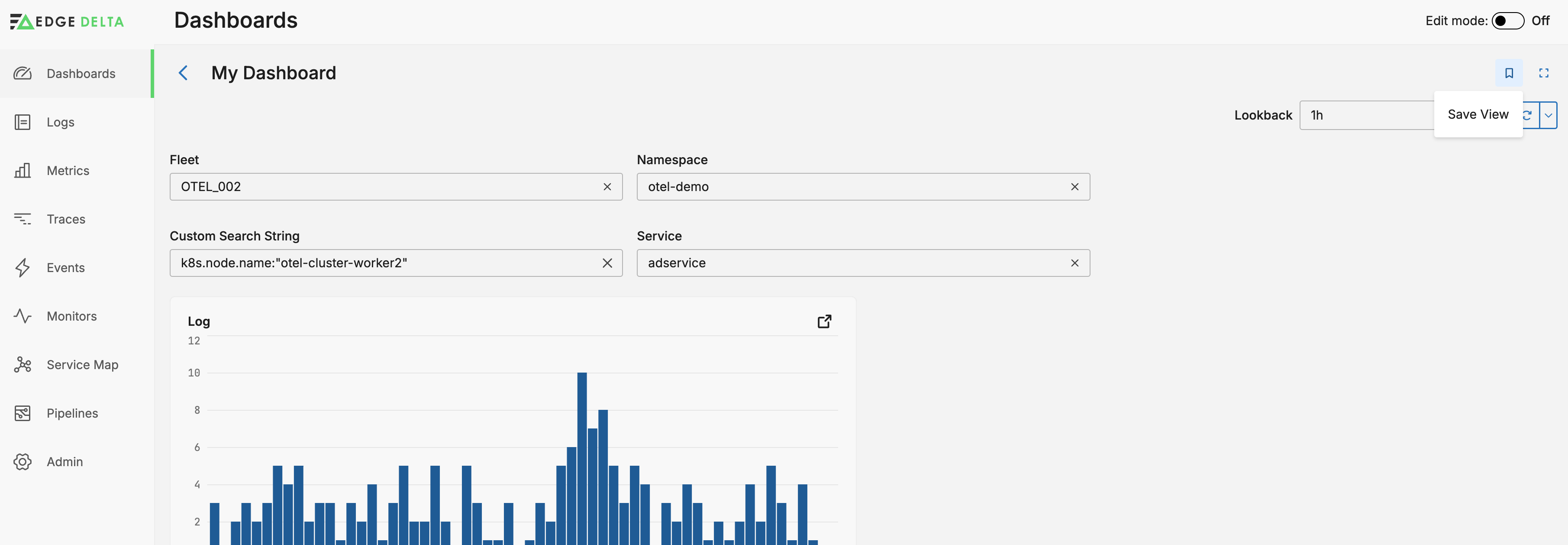
Enter a name for the view and click Save.

Rather than selecting each variable each time the dashboard is opened, click Custom view and select your saved view.
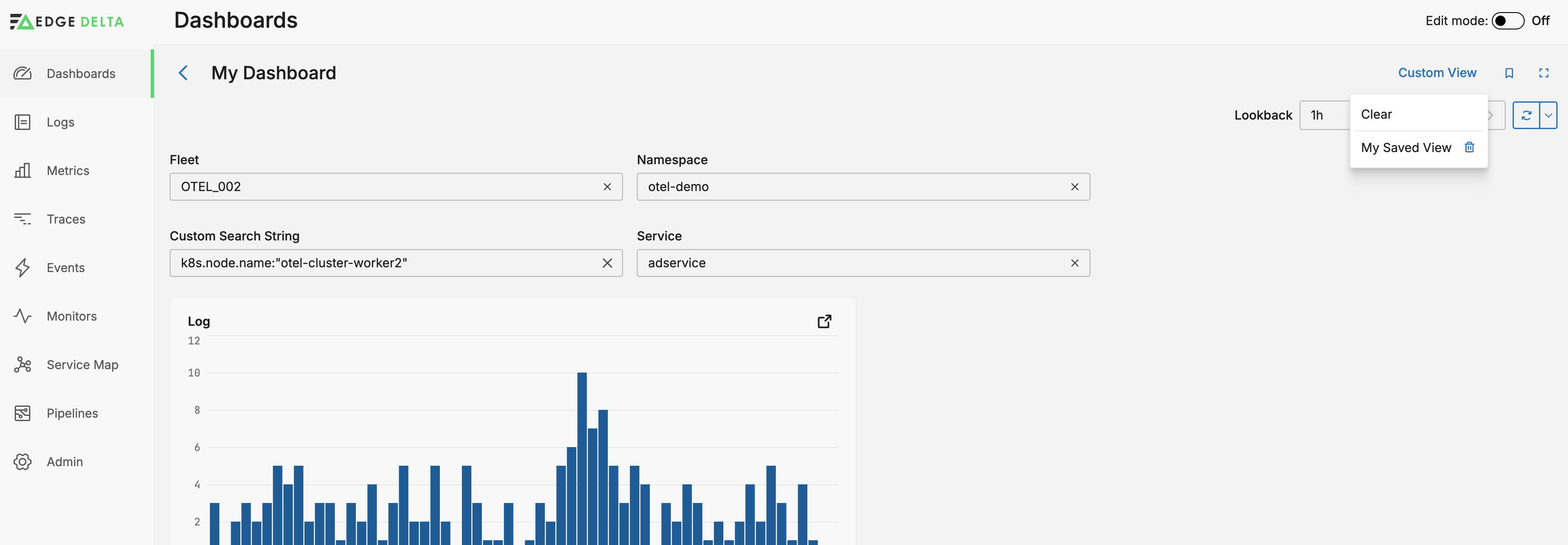
You can set the interval at which the dashboard will refresh automatically, and you can click Refresh to manually refresh it.
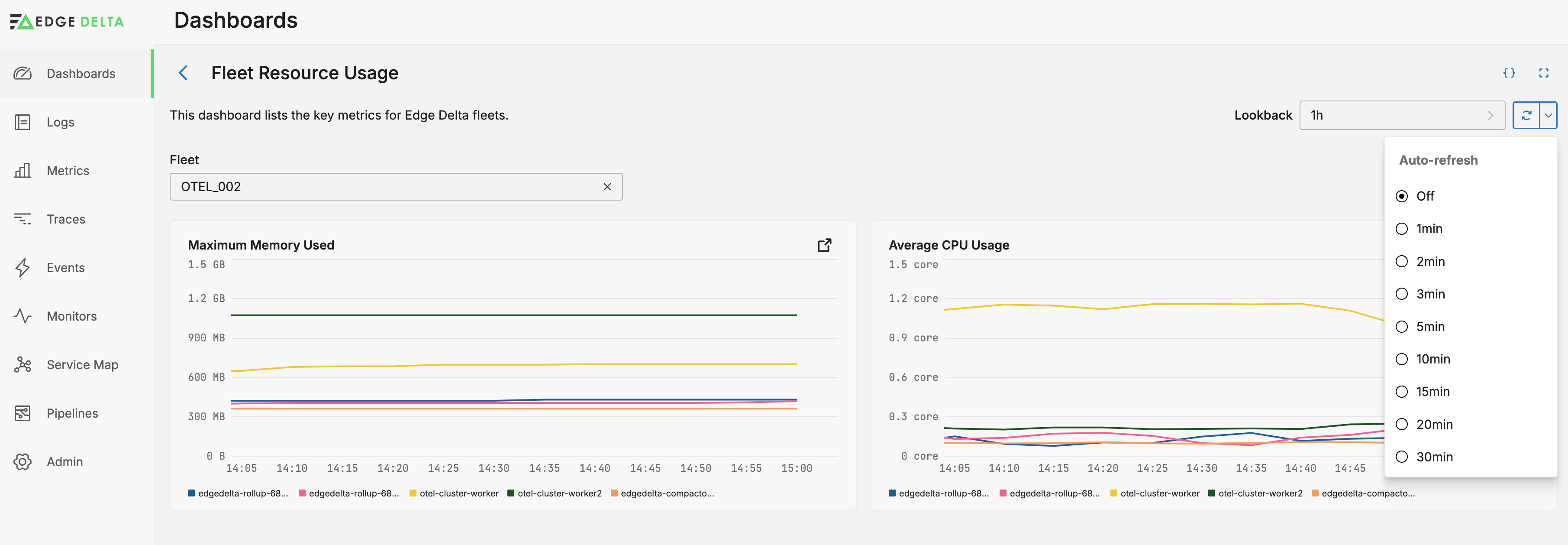
Click Enter Fullscreen to view the live dashboard in full-screen mode.

See Create a Dashboard.
To edit an existing dashboard, select it and switch the Edit Mode toggle:
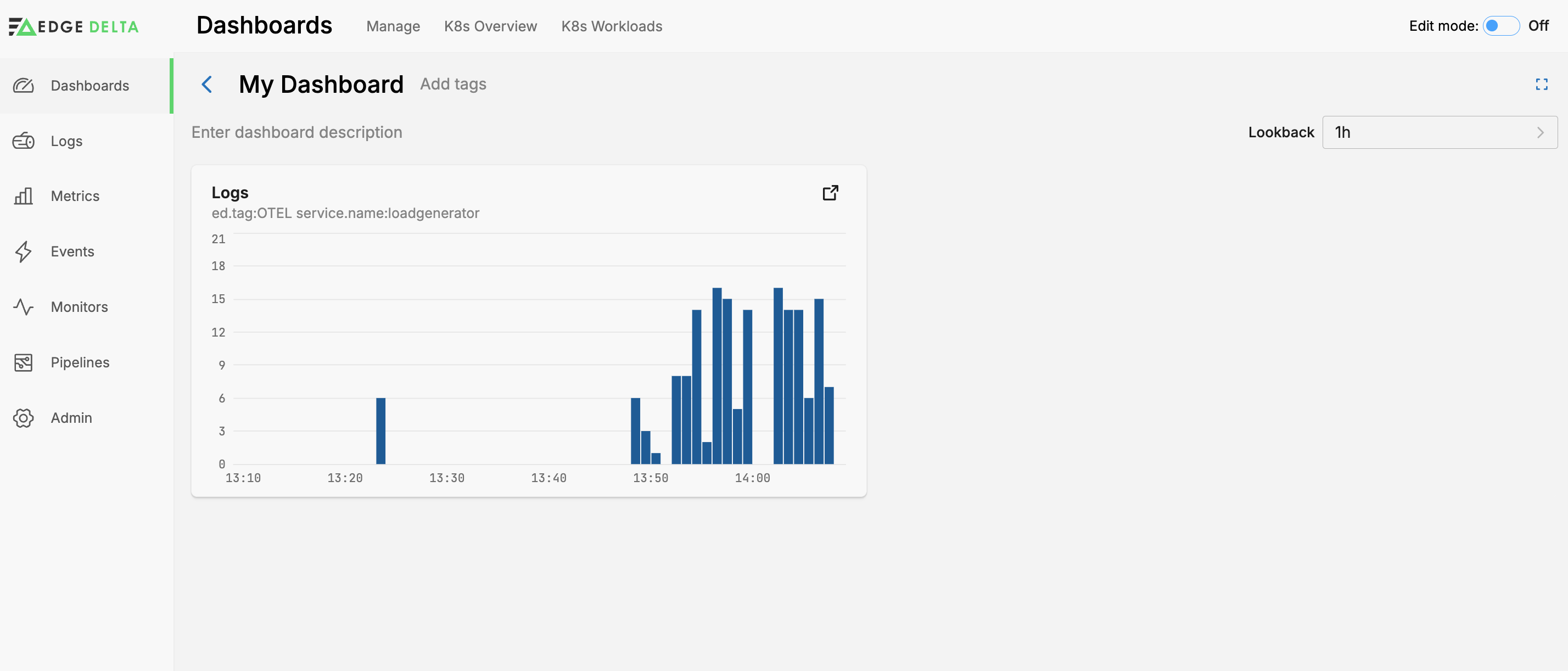
You can view a Dashboard’s JSON definition. With Edit Mode active, click the Edit dashboard definition as JSON button.
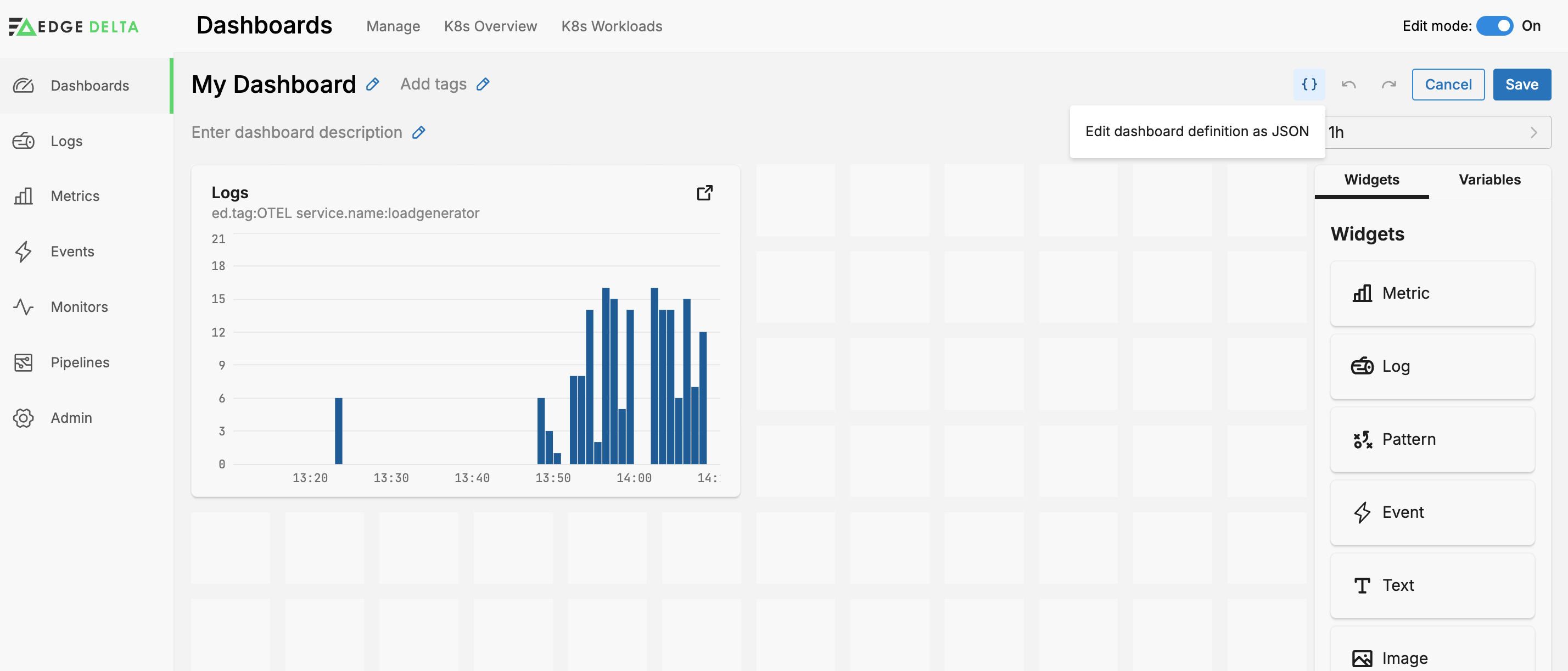
You can tweak the JSON, or copy/paste the JSON to share a dashboard definition.

Dashboards can be shared with users who don’t have Edge Delta accounts. This enables you to publish a dashboard on a device such as a TV screen, large monitor or NUC display in a common SRE office area without creating an account for that device.
See Share a Dashboard.
Default Dashboards in the Edge Delta web application.
Configure Dashboard Widgets in the Edge Delta web application.
Configure dashboard variables in the Edge Delta web application.